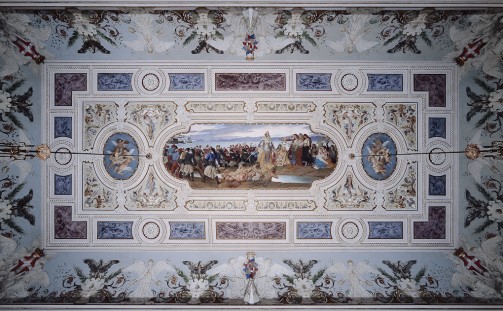The present appearance of the Royal Palace is the result of transformations and adaptations over several centuries. As early as the first half of the sec. XIV the place, overhanging the rocks of Castello Hill, was the seat of the viceroyal residence of the Catalans and Aragonese, to which administrative and political offices were gradually added. The most important intervention was due to the Savoy family and began around 1729-30 by Piedmontese military engineers. The present-day facade dates to that time. Between 1779 and 1815 the palace housed the Savoy court, “exiled” from Turin due to the French occupation. After the “perfect fusion” of Sardinia with the mainland states (1847), the building lost its original purpose until it was acquired by the Provincial Administration (1885), which continued the transformations.
The building also features the picture gallery with portraits of the viceroys, which are interesting from a historical rather than an artistic point of view.
In the palace you can also visit Maria Cristina’s apartment, normally not open to the public, which was built in the early 1800s on the occasion of the princess’s birth.
In the bedroom and the adjoining room (Red Room) you will be able to admire the fine original French tapestries, made of silk with red satin backgrounds and floral decorations, and the walnut parquet flooring, also original.









